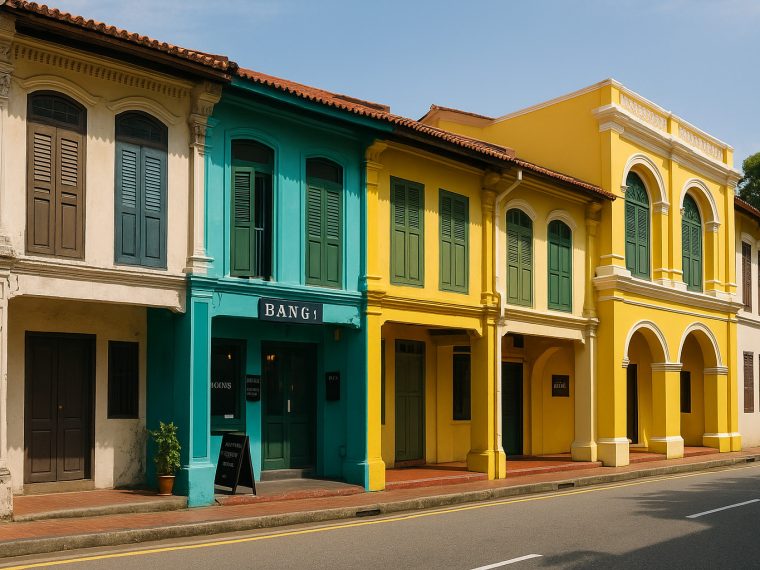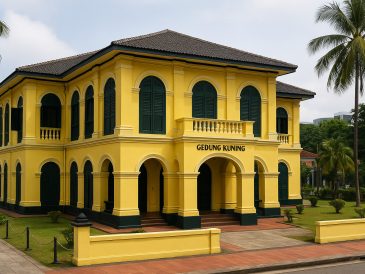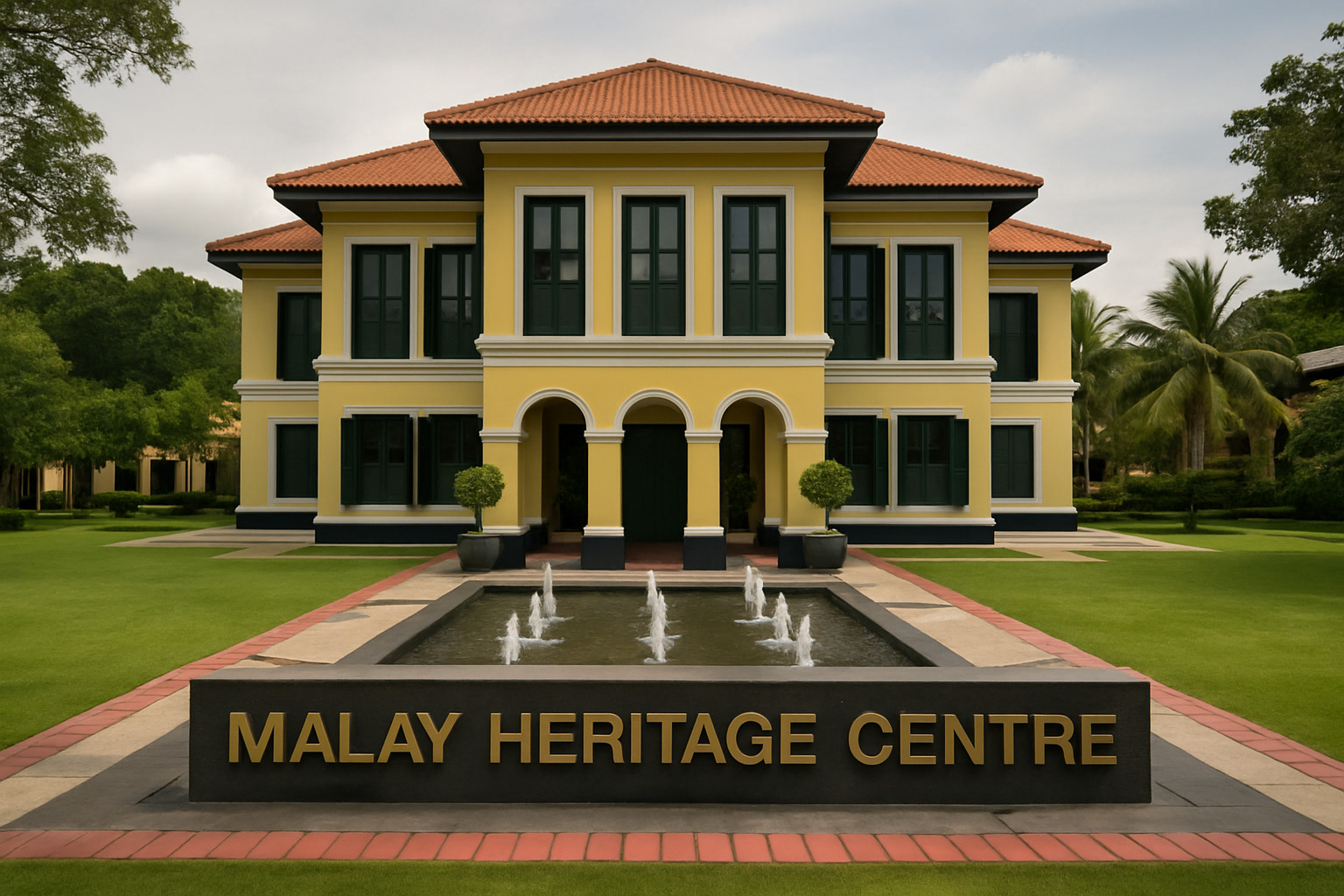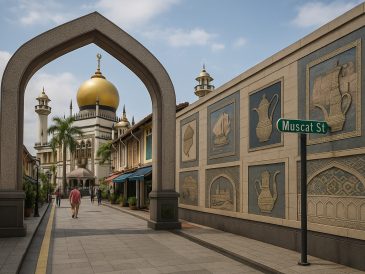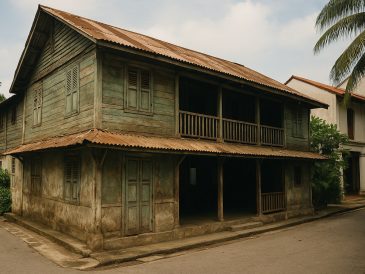Kampong Gelam’s shophouses are more than just buildings—they are witnesses. They’ve stood through colonial rule, wartime disruption, immigration waves, and economic change. If you’re wondering where Singapore’s architectural roots still breathe, this is the place to walk. The oldest shophouses, some dating back to the 1840s, still line the streets, some quiet, some loud with color, but all carrying the imprint of time.
The Early Shophouse Style (1840–1900)
The earliest style of shophouse architecture is known simply as the “Early Shophouse Style.” Modest in ornamentation, these structures were often just two stories high. They had:
- Narrow facades with one or two timber-framed windows on the second floor
- Wood and plaster construction
- Five-foot walkways for shade and socializing
- A business below, and living quarters above
Functionality guided every design decision. This wasn’t about grandeur—it was about survival, commerce, family, and the city’s humid weather. Ventilation was solved through high ceilings and central air wells. Rain was countered with covered corridors. Every inch had a job.
Streets That Carried the Weight of Commerce
Some of these shophouses still stand on North Bridge Road, a road built early in Singapore’s development and one of the district’s key commercial arteries. Heritage documentation highlights No. 780 North Bridge Road as a textbook specimen of the early style. These buildings once housed trades like:
- Textile merchants
- Blacksmiths
- Food vendors
- Bookshops
- Lodging for pilgrims on their way to Mecca
Arab Street was dense with cloth and silk. Haji Lane offered rest to travelers. The architecture wasn’t just about walls and beams—it supported livelihoods, migration, and religious journeys.
Social Infrastructure Built into Architecture
The five-foot way wasn’t just an awning. It was a street-level porch that ran the length of each block. People sheltered here. Children played here. Transactions were made under the cover of these walkways, creating a shared public-private space that still influences shophouse design today.
Gedung Kuning: A Royal Outlier
Not all structures followed the shophouse blueprint. Just off North Bridge Road is Gedung Kuning—The Yellow Mansion—at 73 Sultan Gate. Built around 1840, this residence carried Palladian influences and was home to Malay nobility and merchants. Its yellow façade stood out even in old photographs from 1955, and it remains one of the most iconic structures in Kampong Gelam.
Preservation and Adaptation in the Present
Fast-forward to the present: the same shophouses that once served traders and pilgrims now wear a different coat—literally. Painted in bold colors, some of these buildings now house:
- Boutiques
- Art galleries
- Specialty cafes
- Tattoo parlors
- Design studios
But it’s not just gentrification. Some older trades still remain—heritage food stalls, textile stores, and repair shops operate next to espresso bars and curated retail.
Haji Lane: From Rest Stop to Instagram Favorite
Haji Lane has changed the most visibly. Originally used to lodge pilgrims, the street now thrives as a hotspot for fashion, murals, and cafes. You can still spot early-style shophouses if you look past the street art. Their proportions, their timber windows, and their five-foot ways remain intact, even if what they shelter has changed.
Kandahar Street: A Living Mix
Kandahar Street shows the layered timeline. Here, early and transitional shophouse styles co-exist. Restaurants serve nasi padang, bookstores sell Arabic texts, and architecture studios work behind conserved wooden doors. The street isn’t frozen in time—it’s evolving without discarding its past.
North Bridge Road: Still the Spine
North Bridge Road maintains its legacy as a commercial vein. Though many original tenants have moved or closed, the buildings continue to serve businesses of all sorts—mini-marts, tailors, optical shops, and cafés all operate behind preserved facades. The DNA of the architecture hasn’t changed, even if the signage has.
Gedung Kuning Today
Gedung Kuning has traded royalty for hospitality. It now operates as a restaurant, with its Palladian columns and yellow walls immaculately restored. While its function has changed, the building allows public access, letting people step into what was once reserved for the elite. Its role in the community has shifted, but its presence remains powerful.
Why These Shophouses Still Matter
They are not museums. They are working buildings, doing what they’ve always done—housing people, supporting commerce, and shaping the street-level texture of Kampong Gelam. Their preservation isn’t just for heritage tours. It’s for ongoing relevance.
Key Reasons They Matter Today:
- Architectural Continuity
They maintain a visual and structural lineage across generations. - Cultural Anchor Points
Each shophouse tells a local story—of a trade, a family, a phase in history. - Climate-Responsive Design
Long before green buildings, these were sustainable by necessity: high ceilings, natural light, ventilation corridors. - Mixed-Use Flexibility
Then and now, these buildings have supported hybrid living: work downstairs, rest upstairs.
Final Thoughts Without Finality
Kampong Gelam’s oldest shophouses aren’t frozen relics. They’re still working, still shifting, still contributing. From timber-framed windows to art pop-ups, they show that buildings, like people, can grow without losing their past. The Early Shophouse Style may have been modest, but its endurance gives Kampong Gelam both texture and truth.
